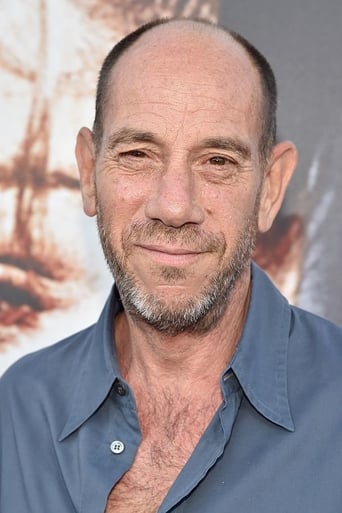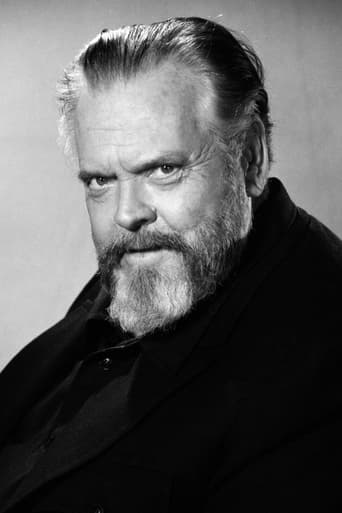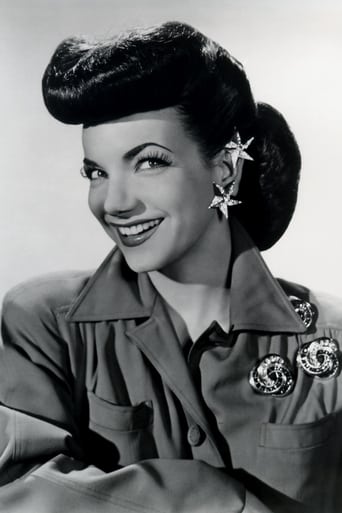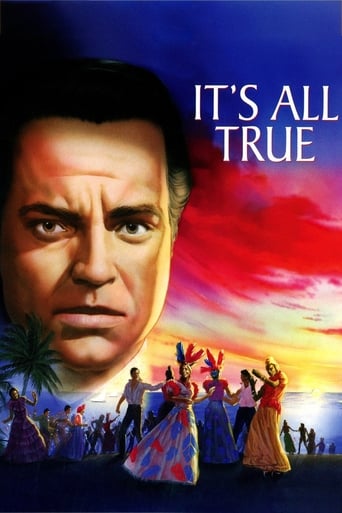
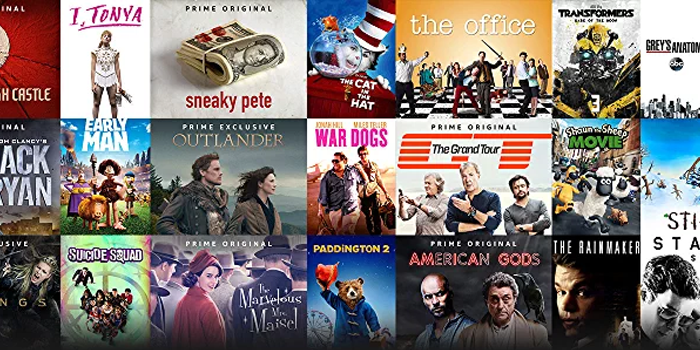
It's All True (1993)
A documentary about Orson Welles's unfinished three-part film about South America.
Watch Trailer
Cast


Reviews
After years of reading about this aborted film of Orson Welles, I finally got to see It's All True on Netflix disc. We see interviews with him explaining how the new regime at RKO had not only reedited The Magnificent Ambersons without his input while he was in Brazil, but also how eventually they cancelled this one while he was there. There was supposed to be a story of a boy and his donkey, a carnival sequence, and one of four men on a raft going on a journey. There are only snippets of the first two but a more complete version of the last one which is silent with a musical score that sounds very modern. This was a fascinating find and I highly recommend It's All True for any Welles buffs out there.
From "This Is Orson Welles" by Bogdanovich On the film: "I've never seen any of what we shot, not a foot. Nobody ever saw the rushes." On filming in South America: "I didn't even like it particularly. I liked samba, but I didn't want to go down and live in South America--it's my least favorite part of the world." On filming: "I had this enormous crew sent down--I didn't want them, but they gave me two camera crews. So I'd sent a crew out there and said, 'Shoot 'em marching up and down.' I had to keep them busy; they were always saying, 'We want to get home--we're trapped here.'...So there must have been an awful lot of junk shot, because I wasn't even there."
The history behind Orson Welles' planned third feature, after his debut (which we all know the name of) and during his troubled post-production on Magnificent Ambersons and role in Journey into Fear, is as fascinating and miraculous as the footage still salvaged. Welles was sent down to make a "good-will" doc on a carnival in Rio. When he got there, he was over-whelmed with the "humanity" of the people, and got pieces of footage whenever he was awake during the time of the carnival. He also filmed footage on a sound-stage (one of his few times to work with color) of the people in their celebration. But as he focused a crucial part of his documentary on a story he read on Time, about four impoverished, immensely courageous fishermen wanting to see their government and sailing hundreds of miles over two months on a raft to do so, the plug was pulled on the film. Apparently the studio, which switched hands (hence, the Ambersons situation), didn't like what Welles' was showing them, which was a bunch of dailies without the essential musical element. So, Welles, not fazed by the rumors that he was partying the whole time with the Brazilian brethren, did what any creative genius would do- he went from being a wunderkind in Hollywood to a Guerilla filmmaker along the high seas.It's All True, the original title of the scrapped-by-the-studios project, is put into two parts, and while it resonates with the kind of movie-doc exposition of Lost in La Mancha in the first part, the second part is simply put, Wellesian. Richard Wilson (once Welles' assistant), Bill Krohn, and Myron Meisel, gather up interviews with the real locals from the time, or relatives, and put together a sort of video history on the tale of the Jangadeiros, and Welles's impact on the people (many of whom never saw a movie before). First, there are wonderful, if all-too-brief, clips of an unfinished part of the documentary called "My Friend Bonito". Then, we get to see an inside look at how the (un-true) rumors of Welles' debauchery that supposedly ruined the project, ironically, forced Welles' to cut corners to get his vision done - which becomes more intense after the original leader of the fishermen, Jacare, dies in a drowning accident. There are interesting interviews as well with Welles and his collaborators. Some of this is rather adulatory, but it's also enthralling as a trip into a time capsule, and into a director's process (i.e. using an extremely limited budget to finish the film).And the second part of the film is, aside from the part on the film's checkered history, is a unique example of history itself. "Four Men on a Raft", Welles' silent-film dramatization of the events as detailed in the Time article, is for me one of the greatest silent films never seen. Like in Citizen Kane, he uses some of his trademarks, like inventive low-angles and deep focus, but as well he implements such a heavy documentary style (some have said it's "Eisenstein-like", which I can see since it concerns a story of the working people against the fascist-types), it's no less than one of Welles' most daring feats as a director. Although this version has no audible dialog (people talk, no voices), and unlike many other silent-films there are no inter-titles explaining what they say. On top of that, there is a musical score provided by Jorge Arrigada that is rousing and pretty appropriate for the tones and sections of the film, but is arguably not what Welles' might have used. What is extraordinary about this kind of dramatized (and I say dramatized because there is an added love story in the mix, not based on truth) film is that it's the precursor to neo-realism that barely saw the light of day. It's amazing that by himself, Welles' managed to form together his own sort of storytelling style in what remains of his film, that is very simplistic and completely with non-actors, and makes it work as a remarkable piece of art. The camera just watches things happen, and how it watches is all the more special in how Welles, with his cinematographer George Fanto, uses as much expressionism as naturalism in the compositions. Bottom line, this one part of the film is as courageous as the people who inspired it, and as a piece of film history, It's All True successfully provides insight and enjoyment. After all, what better way to showcase Orson's passion for life and film with a Samba!
Welles was apparently asked by Nelson Rockefeller to make a film cementing USA-Latin American relations during World War II, to forestall possible Nazi influence in the South. It's easy to feel resentful about this film, especially if you've read David Thomson's majesterial 'Rosebud: The Story Of Orson Welles'. He relates how Welles' persistant and eventually pointless devotion to this project led directly , through his own lapses, to the destruction of his greatest film, THE MAGNIFICENT AMBERSONS.On the other hand, this is a major act of cinematic restititution, the equivalent of finding a lost Shakespeare play, or Bach cantata. Any scrap of abandoned Wellesiana is vital, and needs to be seen, for its inherent brilliance of style and ideas, whatever its superficial shortcomings; and to give a more coherent grasp of an awesome, mercurial career.The only problem is that the project, even if it had been completed, seems to have been wrongheaded, especially in consideration of Welles' particular talents. I had seen snippets of the samba sequence on TNT a few years ago, and they seemed redolent of a certain, loveable Welles - anecdotal, entertaining, sympathetic, larger-than-life, perceptive. A large element of the Welles aesthetic is play. The flaw of this film is that Welles abandons this because he wants to be seen in serious, selfless, unpatronising mode. This attitude today, however, can seem as simplistic, and even dangerous, as the worst pieties of Italian neo-realism.The restoration is structured as a documentary, as we get a brief background to the story: both Welles' involvement, and the plight of the Brazilian people he portrayed. The film itself was intended to be a triptych. We only get snippets of the first two parts - 'Benito' has some remarkable camera angles later used more meaningfully in OTHELLO and THE IMMORTAL STORY; a loving capturing of Mexico, which, like DEUX OU TROIS CHOSES QUE JE SAIS D'ELLE, manages to aestheticise poverty; and a lovely shot of flying sheep. The second story was supposed to be about the roots of samba - we get some amazing, evocative colour footage of a Rio carnival, all the more moving and alive today when we think that this was going on in the middle of a black and white war.The centrepiece of IT'S ALL TRUE is a supposedly complete 'Four Men On A Raft' (with an unintentionally comic reminder of 'Three Men On A Boat'): a reconstruction of four peasant fishermen's 1650-mile sea voyage to the Brazilian fascist leader, the appropriately named Vargas, to protest about their atrocious living and working conditions.This is a silent work of the most ravishing beauty, with some of the most extraordinary images ever filmed, utilising, yet far superior to, Eisensteinian composition: the fishermen at work; life in the community; the sea voyage; visits to beautiful Mexican churches; the arrival of the men at a Rio beach. There is a jaw-dropping funeral sequence, a dwarfed procession under a weltering sky, which is among the best things in Welles (i.e. cinema).It's just that I, personally, can't stand this kind of filmmaking. It's main influence is the unbearable Robert Flaherty, and besides a trite, TABU-style love story, there is an unthinking romanticising of the peasantry, ignoring them as actual human beings who might prefer not to be seen as so saintly, that verges on the offensive; a benevolent version of the white man's burden. Of course, Welles, politically, was a very decent, liberal, passionate man, but none of the methods used to politically expose, as well as humanise, Charles Foster Kane, are used here: that would be to trivialise the project.It's this air of repressive earnestness that kills IT'S ALL TRUE for me. Welles could be a brilliant documentary maker - see F FOR FAKE - but this film, for all its peerless beauty, seems little more than propaganda, with Welles' atypical lack of ego making it feel unWellesian and underdone. This is doubly apparent during the closing credits, over which is played a wonderful, amusing encounter between Welles and Carmen Miranda, who explains to him various aspects of the samba. The heroic restorers deserve laurels, medals and a place at the celestial restoration of AMBERSONS, but if you want to see a great 'Good Neighbour' film, watch the magical THE THREE CABALLEROS.


